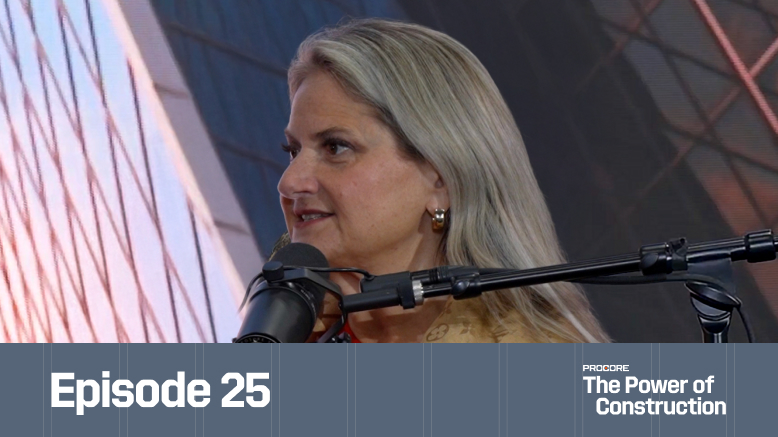— 16 min read
Construction Partnering: The Ultimate Guide to Collaborative Project Delivery


Last Updated May 6, 2025

Sam Hassoun
President & CEO
Sam Hassoun is a respected leader and brand ambassador for Construction Partnering within the transportation industry. He is the founder and president of the Global Leadership Alliance (GLA), where he utilizes his extensive expertise to prevent disputes at every stage of project delivery. In recognition of his significant contributions to the construction field, Engineering News-Record (ENR) recently honored him as one of the Top 25 Newsmakers in the industry.

Taylor Riso
Contributing Writer
91 articles
Taylor Riso is a marketing professional with more than 10 years of experience in the construction industry. Skilled in content development and marketing strategies, she leverages her diverse experience to help professionals in the built environment. She currently resides in Portland, Oregon.

Israel Simmons
Civil & Infrastructure Solutions Specialist
11 articles
Israel Simmons, DBIA, CCM, PMP is a seasoned construction professional with over 12 years of leadership experience delivering over $3 billion in complex civil and infrastructure projects across the U.S. His diverse portfolio spans major freeways, bridges, rail, wastewater treatment plants, aviation, and more. He joined Procore to help transform the construction industry through a unified, integrated platform that streamlines project execution from start to finish. Israel earned a bachelor’s degree in construction management with minors in Business Administration and Communications from Drexel University.
Last Updated May 6, 2025

For decades, construction projects have been shaped by fragmented priorities. Owners, contractors, designers and third-party stakeholders often begin with competing objectives — and a contract that favors risk transfer over shared responsibility. The result is familiar across the industry: delays, rising costs, quality issues and a long trail of disputes.
These problems aren’t unique to any one delivery model or project size. From local infrastructure upgrades to billion-dollar design-builds, the same patterns show up again and again when alignment breaks down. But a growing number of teams are choosing a different approach.
Partnering in construction offers a structured way to bring all stakeholders on a project into alignment early, and keep them aligned from preconstruction through closeout. When done right, it helps protect project outcomes by building trust, transparency and a shared definition of success from the start.
This guide explores what construction partnering is, how it works in practice and why more owners, contractors and public agencies are embedding it into projects of every size.
Table of contents
What is construction partnering?
Partnering in construction is a formal process designed to align project stakeholders around a common set of goals. Rather than defaulting to contract positions or individual interests, it creates a space for clients, contractors, designers and other contributors to define what success looks like — together.
This process goes beyond general cooperation. It asks teams to identify shared priorities, acknowledge project risks upfront and commit to a collaborative approach for tackling challenges. The emphasis shifts from protecting one party’s interests to delivering a project that meets its core objectives: on time, on budget, safely executed and built to spec.
At its core, partnering replaces adversarial dynamics with a Mission Project-First mindset. Project outcomes take precedence over individual wins, and communication becomes a tool for progress rather than protection.
Partnering keeps the mission project-first — when the project succeeds, everyone wins.
Why use partnering?
Partnering brings measurable value to construction teams by replacing reactive decision-making with a more intentional, aligned process. When stakeholders work from a shared definition of success—rather than protecting individual positions—they’re able to identify risks early, resolve tension before it escalates and focus on outcomes that benefit the full team.
Across a range of delivery methods and project types, partnering has been shown to reduce delays, improve working relationships and limit the kinds of disputes that derail timelines and inflate budgets. The benefits aren’t theoretical; they show up in daily operations and final outcomes.
Fewer Claims and Legal Disputes
Disagreements are addressed early and collaboratively, reducing the likelihood of arbitration or litigation.
Improved Schedule and Budget Performance
Aligned teams make faster, better-informed decisions and are better positioned to respond to unexpected changes.
Better Safety and Quality Outcomes
Shared accountability promotes a culture of proactive planning and consistent execution.
More Room for Innovation
When stakeholders trust the process — and each other — they're more likely to share ideas and propose solutions that improve performance.
Stronger Alignment Across Stakeholders
Whether internal or external, each party understands its role and how it contributes to overall project success.
Projects that delay or skip partnering often see the opposite. Without a structure in place for early alignment, even small issues can escalate quickly, creating friction that’s difficult to undo. Partnering doesn’t remove every obstacle, but it gives teams a better way to face them — early, openly and as a unified group.
The Partnering Process
Partnering isn’t a one-time meeting or a box to check: It’s a structured process that starts before work begins and continues throughout the life of the project. While every project is different, the partnering lifecycle typically follows four key phases: pre-engagement, kickoff, ongoing collaboration and facilitation.
Aligning Before Construction Begins
Formal partnering often begins before a shovel ever hits the ground, and in some cases, even before the Notice to Proceed (NTP) is issued. This early engagement phase lays the foundation for everything that follows.
Facilitators start by meeting with each major stakeholder, typically the owner or agency, the contractor and any key third-party contributors. These conversations are used to uncover individual motivations, identify known risks and define what success looks like from each perspective. It’s also an opportunity to flag potential red flags—such as a low bid margin, unclear specs or conflicting priorities — that could derail the project if not addressed early.
The insights gathered during this phase shape the agenda and goals of the first partnering session and help the team tailor the process to the needs of the project.
Setting the Tone at Kickoff
The kickoff meeting marks the official start of the partnering process. Whenever possible, it’s held in person to establish trust, set expectations and encourage open dialogue. The tone of this session often defines the team culture for the rest of the job.
During the session, teams work together to define non-negotiable goals—such as staying on schedule, maintaining safety, delivering quality and staying within budget—as well as project-specific objectives based on risks or external constraints. For projects in sensitive environments or high-traffic areas, for example, that might include minimizing public disruption or confirming regulatory compliance.
The session concludes with the development of a Partnering Charter or written agreement, which outlines the project’s core goals and defines how the team will work together. While this charter is not a legal contract, it is often included alongside partnering contracts in construction documents, and it serves as a visible commitment from all major parties.
Keeping Teams Aligned Throughout the Project
Partnering is only effective when it’s sustained. After the kickoff, teams hold regular follow-up sessions — monthly, at major milestones or more frequently for high-risk jobs. These meetings may be virtual or in person, depending on the phase of the project and the issues at hand.
Follow-up sessions are used to review progress against the charter, surface any emerging issues, revisit project risks and identify new opportunities for collaboration or innovation. In some cases, they’re also used to celebrate milestones or publicly recognize team performance — both of which help reinforce the partnering culture on the jobsite.
The Facilitator’s Role as a Neutral Anchor
On most projects, a third-party facilitator leads the partnering process. This role is essential, not just for keeping sessions on track, but for maintaining trust and objectivity over time.
A skilled facilitator doesn’t represent any one stakeholder. Instead, they work on behalf of the project itself, helping align the full team and keep conversations focused on shared outcomes. They gather input, guide discussion, resolve tension when it arises and adjust the process as needed to match the reality of the job.
That neutrality is what gives facilitators the ability to manage project risks before they become conflicts—and to keep people focused on solving problems, not assigning blame.
Our client is the project. Not the contractor. Not the agency.

Sam Hassoun
President & CEO
Global Leadership Alliance (GLA)
Core Components of a Successful Partnering Strategy
Successful partnering doesn't happen by accident — it’s built on a foundation of clearly defined goals, early risk awareness and leadership that models collaboration from the top down. While every project is different, the most effective partnering strategies share three essential elements: non-negotiable goals, project-specific targets and strong executive alignment.
Non-Negotiable Goals: The Baseline for Success
Every partnering process begins with a core set of goals that apply to nearly every job, regardless of scope, location or delivery method. These are the universal standards that define whether a project stays on track and is delivered as promised:
- Safety: A zero-incident environment is non-negotiable and directly tied to productivity, morale and project continuity.
- On-time Delivery: Time is a shared priority—delays impact everyone.
- Staying Within Budget: Cost control protects both public and private investment and helps maintain trust across the team.
- Meeting Quality Standards: Meeting or exceeding specifications isn’t just a contractual obligation — it’s a measure of professional integrity and long-term value.
These goals are the backbone of every charter and serve as a reference point during check-ins, surveys and performance reviews. If teams don’t align on these from the outset, it becomes harder to build trust or manage risk as work progresses.
Project-Specific Goals: Tailored to Risk and Context
Beyond the universal benchmarks, every project presents unique challenges—environmental conditions, community access, third-party constraints or sensitive logistics. The partnering process accounts for these early, identifying and documenting project-specific goals that reflect the job’s context and potential risks.
Common examples include:
- Environmental compliance, particularly when working near protected habitats or water
- Minimizing public disruption in urban or high-traffic areas
- Community impact and access, including pedestrian safety and small business continuity
- Utility coordination, which can significantly affect scheduling and sequencing
- Seasonal or weather constraints, such as freeze-thaw cycles or limited construction windows
- "Railroad" or third-party coordination, which happens when outside agencies influence the project timeline
Teams that clearly define these issues and agree on how to address them are better positioned to tackle complexity without slipping off schedule or triggering unnecessary conflict.
Executive Alignment: Culture Starts at the Top
No partnering strategy is sustainable without leadership buy-in. Executive alignment is where culture is set, risks surface and expectations are reinforced.
On many projects, facilitators begin the partnering process with private meetings between top decision-makers from the owner, contractor and other major stakeholders. These sessions allow leaders to speak candidly about potential obstacles—whether jurisdictional, financial or operational — without putting the burden on the field team.
This kind of early, high-level alignment shapes how the rest of the team works together. It signals that collaboration is a priority, not a preference, and gives frontline teams the confidence to raise issues, share ideas and stay focused on outcomes instead of blame.
Partnering culture doesn’t trickle up; it starts at the top. When leaders commit early and visibly, the rest of the team follows.
Stay updated on what’s happening in construction.
Subscribe to Blueprint, Procore’s free construction newsletter, to get content from industry experts delivered straight to your inbox.

Delivery Methods & Contract Integration
Partnering has moved beyond best practice to become a formal part of many construction contracts. As more owners and contractors recognize its value, partnering is being written directly into contracts, specifications and procurement language across a range of project types and delivery models.
How Partnering Appears in Construction Contracts
For many public and private owners, partnering is now embedded in the contract documents issued during procurement. This means contractors know up front that structured collaboration will be part of the project — and that it will require time, participation and shared accountability.
Some owners choose to fully fund partnering efforts themselves. Others split the cost 50/50 with the contractor, recognizing it as a mutual investment in project performance. In either case, the expectation is clear from the start: partnering isn’t optional, and it’s not just a meeting—it’s a continuous process tied to project health.
After the contract is awarded, the initial partnering session culminates in the creation of a formal Partnering Charter. While not a legal agreement, this document outlines the project’s goals, commitments and dispute resolution protocols. It serves as a visible reminder of the shared mission and is often referenced throughout the job to maintain alignment.
Partnerships Applicable Across Delivery Models
One of the reasons partnering has gained traction industry-wide is its flexibility. It can be applied effectively across nearly every major delivery method.
Design-Bid-Build (DBB)
In traditional low-bid models such as design-bid-build, teams often meet for the first time after the contract is awarded. Partnering helps close that gap by creating space for owners, contractors and designers to align on goals and handle scope gaps before they become disputes. It also helps shift the relationship from adversarial to collaborative — something not always guaranteed in DBB environments.
Design-Build (DB)
In a design-build model, construction input shapes the design as it’s being developed — bringing budget, constructability and schedule into focus early. But this overlapping workflow only works when trust and communication are in place. Partnering supports that dynamic by giving teams a formal process for resolving design decisions, surfacing risks early and staying aligned as project details evolve. It helps the team respond in real time without falling into siloed thinking or misaligned expectations.
Construction Manager/General Contractor (CM/GC)
Early involvement is the key advantage of CM/GC, also referred to as Construction Manager at Risk (CMAR) — and partnering enhances that value by helping stakeholders define success criteria and address risk while there’s still time to influence scope. It also promotes transparency during cost development and target value design phases, creating a more stable foundation heading into construction.
Public-Private Partnerships (P3)
Long-term, high-stakes infrastructure projects carry more variables and more stakeholders. P3 partnering gives the public agency, private developer, financiers and operators a way to stay aligned on performance, handoffs and long-term goals — particularly when delivery spans multiple phases or entities.
Because partnering is structured to align stakeholders regardless of contractual relationships, it can adapt to the dynamics of each model while still delivering consistent benefits: fewer disputes, better alignment and a stronger path to project success.
Real-World Examples of Partnering Success
The benefits of partnering are clearest on the projects that needed it most or were committed to it from the very beginning. From mid-course corrections to billion-dollar success stories, these examples show how structured collaboration helps keep teams aligned, disputes contained and complex work on track.
Gerald Desmond Bridge: Rebuilding Alignment Midstream
At the start of the Gerald Desmond Bridge replacement project in Long Beach, formal partnering wasn’t part of the plan. Coordination between stakeholders relied on informal processes, and over time, unresolved issues began to accumulate. The team was more than a year into construction when disputes reached a tipping point.
By introducing a structured partnering process mid-project, the team was able to realign goals, address long-standing communication gaps and rebuild working relationships. Despite a series of serious challenges, in and turnover in leadership, the project was completed with consistent executive partnering sessions resulting in no unresolved claims. What began as a high-risk scenario became a case study in the impact of formal collaboration.
I-405 Orange County: Partnering from Day One
The $2.2 billion I-405 improvement project in Orange County is one of the largest design-build efforts in California history—and one of its most successful. With the Orange County Transportation Authority (OCTA), Caltrans and the contractor aligned on the value of early engagement, partnering was embedded into the project from the start.
Executive alignment sessions, consistent follow-ups and a mission-first culture helped the team stay focused through every phase of work — even as leadership changed and one of the joint venture partners exited. The project opened on time, without claims and continues to be recognized as a model for how collaboration drives performance on large-scale infrastructure.
SR-46 Project: Virtual Partnering with Local Impact
Launched under a CM/GC delivery model at the height of the COVID-19 pandemic, the SR-46 corridor improvement project had to adapt partnering to remote conditions. The team used virtual sessions to align early around safety, public access and environmental coordination — key issues given the corridor’s proximity to sensitive communities and infrastructure.
Once in-person sessions resumed, those early virtual connections helped accelerate trust and decision-making. By identifying risk early and staying engaged throughout the process, the team was able to manage complexity, avoid disputes and deliver one of the most successful CM/GC projects in its district.
Tools & Metrics: The Monthly Survey
Even the strongest partnering relationships benefit from regular check-ins — and the most effective teams don’t wait for issues to surface organically. That’s where the monthly partnering survey comes in. Built around the project’s core goals, this tool helps measure how the team is performing across key categories and provides a shared view of progress over time.
Traditionally, the survey focuses on four foundational metrics:
- Schedule: Are milestones being met? Are there any blockers that could affect completion?
- Budget: Is the project tracking within cost parameters? Are budget risks being flagged and addressed early?
- Safety: Are there any leading indicators of incident risk? Is the site culture supporting a safe environment?
- Quality: Is work being delivered to spec? Are rework and punch items trending up or down?
Over time, many teams have expanded the survey to include more qualitative and predictive metrics. These additions give a fuller picture of the project’s health and help teams act on potential challenges before they escalate:
- Risk Visibility: Are emerging risks being identified and shared across stakeholders?
- Stakeholder Satisfaction: Is the working relationship strong across owner, contractor and third-party contributors?
- Innovation Tracking: Are team members proposing new ideas, methods or materials that add value?
- Team Wellness: Are people supported, engaged and able to do their best work — both in the field and off-site?
With consistent participation, the survey becomes more than a scorecard—it becomes an early warning system. It replaces anecdotal input with quantifiable data and gives project leaders the information they need to take action before small issues become major problems.
As projects become more complex and teams more distributed, this kind of real-time visibility is essential for maintaining alignment, accountability and performance from start to finish.
The survey becomes a mirror—it gives the team a real-time reflection of how things are going, not just what’s getting done. It surfaces risks early, highlights where alignment might be slipping and shows where the team is strong. When used consistently, it shifts the conversation from scorekeeping to shared awareness
Sam Hassoun
President & CEO
Global Leadership Alliance (GLA)
Expanding Partnering to Small Projects
While partnering was once viewed as a tool for large-scale, high-risk projects, that’s quickly changing. Public agencies have recognized that many of their most costly claims and disputes originate not on billion-dollar megaprojects, but on smaller jobs—often under $10 million.
In response, some agencies have lowered their partnering thresholds to $1 million and above, acknowledging that even routine projects benefit from early alignment and structured communication. The goal isn’t to scale back expectations—it’s to make partnering more accessible, flexible and proportional to the needs of the job.
Smaller projects now use:
- Virtual sessions to reduce travel and time constraints
- Streamlined tools focused on the most relevant risks
- Scaled-back dashboards that still track performance without overcomplicating the process
By adapting the model, not the mindset, small teams can get the same clarity, accountability and alignment that partnering provides on larger jobs. The result: fewer disputes, stronger delivery and a more consistent culture of collaboration across the board.
Courses about construction.
For construction.
Unlock your career potential with our free educational courses on Health & Safety, Data in Construction, and more.
How Partnering Is Shaping Modern Project Delivery
Across the industry, partnering is evolving from a large-project strategy into a standard part of effective project delivery. Many project teams are already seeing the results. Structured partnering programs for some public agencies have eliminated the need for arbitration almost entirely — a shift that speaks to the long-term impact of early alignment and consistent engagement.
What’s driving this change is more than process: It’s a shift in how teams approach collaboration. Rather than waiting for problems to escalate, project leaders are building systems that allow them to surface risks early, track performance consistently and keep teams focused on shared goals.
New tools are helping extend that impact. Dashboards, remote facilitation and digital tracking are making partnering more flexible and easier to scale. When integrated into the project lifecycle, these tools give teams the ability to monitor progress in real time and act before small issues turn into larger disruptions.
The result is a more proactive, accountable way to build — one that supports safety, schedule, budget and culture without adding complexity. As more teams adopt this approach, partnering will continue to shape how projects are delivered, not just on major infrastructure jobs, but across the full range of projects.
Was this article helpful?
Thank you for your submission.
67%
33%
You voted that this article was . Was this a mistake? If so, change your vote
Scroll less, learn more about construction.
Subscribe to The Blueprint, Procore’s construction newsletter, to get content from industry experts delivered straight to your inbox.
By clicking this button, you agree to our Privacy Notice and Terms of Service.
Thank you!
You’re signed up to receive The Blueprint newsletter from Procore. You can unsubscribe at any time.
Categories:
Written by

Sam Hassoun
President & CEO | Global Leadership Alliance (GLA)
Sam Hassoun is a respected leader and brand ambassador for Construction Partnering within the transportation industry. He is the founder and president of the Global Leadership Alliance (GLA), where he utilizes his extensive expertise to prevent disputes at every stage of project delivery. In recognition of his significant contributions to the construction field, Engineering News-Record (ENR) recently honored him as one of the Top 25 Newsmakers in the industry.
View profile
Taylor Riso
Contributing Writer
91 articles
Taylor Riso is a marketing professional with more than 10 years of experience in the construction industry. Skilled in content development and marketing strategies, she leverages her diverse experience to help professionals in the built environment. She currently resides in Portland, Oregon.
View profileReviewed by

Israel Simmons
Civil & Infrastructure Solutions Specialist | Procore Technologies
11 articles
Israel Simmons, DBIA, CCM, PMP is a seasoned construction professional with over 12 years of leadership experience delivering over $3 billion in complex civil and infrastructure projects across the U.S. His diverse portfolio spans major freeways, bridges, rail, wastewater treatment plants, aviation, and more. He joined Procore to help transform the construction industry through a unified, integrated platform that streamlines project execution from start to finish. Israel earned a bachelor’s degree in construction management with minors in Business Administration and Communications from Drexel University.
View profileExplore more helpful resources

Who is accountable for innovation in construction?
Everyone says construction needs to innovate—but no one agrees on who’s actually responsible for making it happen. Is it the owner? The builders? The tech vendor? Or is innovation everyone’s...

Integrated Project Delivery in Practice: A Framework for Collaboration
On construction projects, traditional delivery methods put different stakeholders in their own silos. While the design team feeds drawings and specifications to the general contractor (GC), the GC’s expertise in...

AI Construction Tools: Optimizing Every Stage of Construction
Builders, like everyone else, are being bombarded with information about incorporating AI into their work. However, determining which areas to automate can be challenging. This article explores the features of...

Construction Technology Data Analytics: The New Standard in Construction
Much of the newest wave of construction technology is impressive: drones performing site surveys, 3D printers manufacturing walls on-site, 360° reality-capture cameras, and more. But all this visible technology collects...
Free Tools
Calculators
Use our calculators to estimate the cost of construction materials for your next project.
Templates
Find a template to help you with your construction project tasks.
Material Price Tracker
Get the latest U.S. retail prices and view historical trends for common building materials.
Glossary
Explore key terms and phrases used in the industry.
